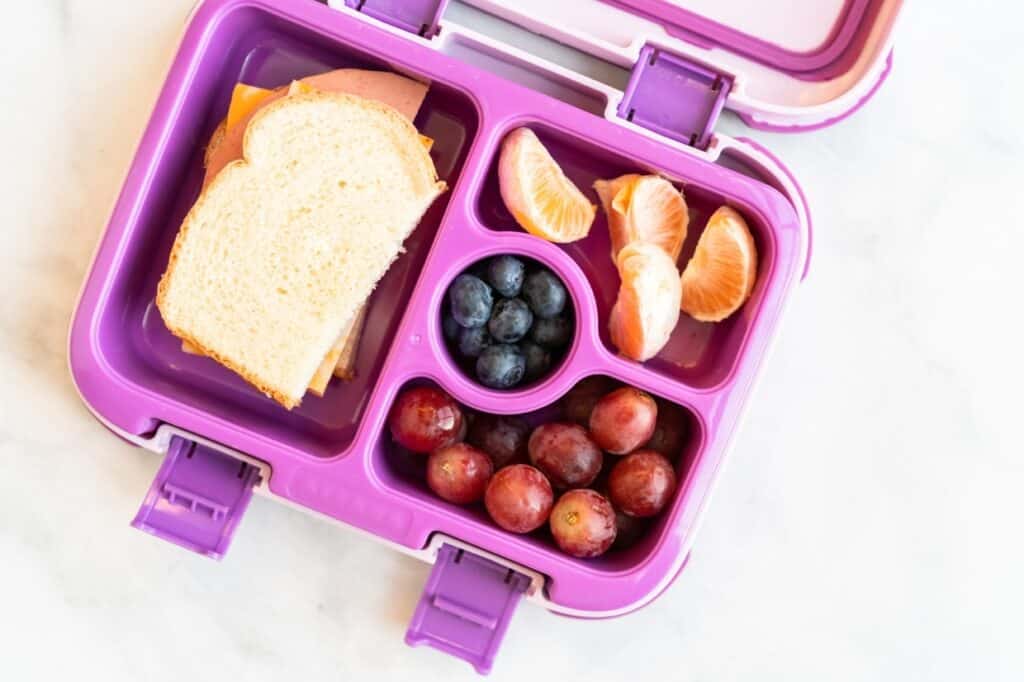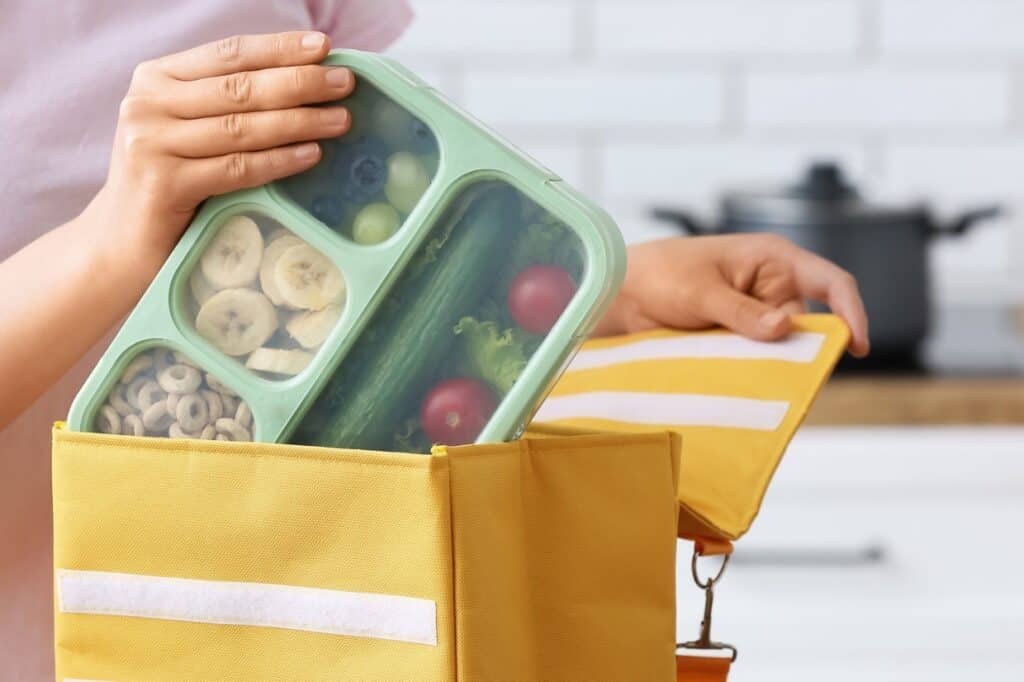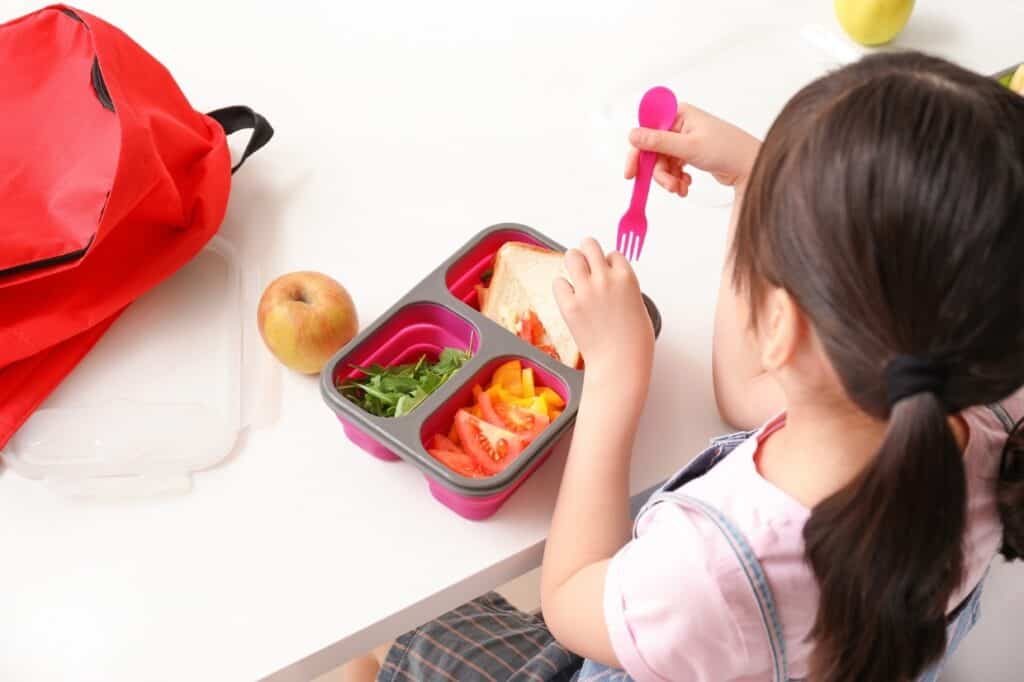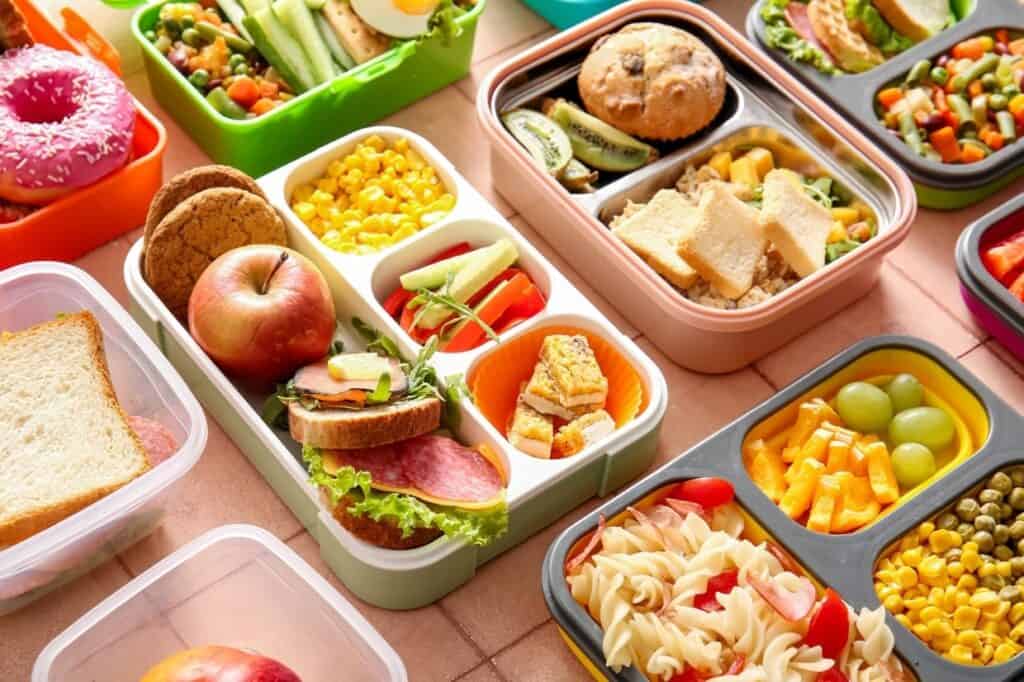As the back-to-school season approaches, parents may want to consider choosing a bento lunch box to simplify lunch packing. These compartmentalized containers originated in Japan and have gained popularity worldwide for their versatility and organization. Find out how they can make it easier for you to pack a lunch to take to school or work.

Origin of the bento box
The bento box is a Japanese design from over 1,000 years ago. The literal translation of the Japanese word bento is convenience or convenient. That makes sense, as it was a convenient way for farmers and others to take food on the road with them.
At some point in the history of the bento box, a few things changed. One big change was that the bento box somehow became synonymous with dim sum. Maybe that cross-cultural connection came about because when you order Chinese dim sum, you’re getting a number of different dishes served in separate sections of a bamboo or wood box — including different kinds of rice — much like the original bento box.
Rise of the bento lunch box
In the 20th century, bento boxes gained popularity in Japanese schools and workplaces. They became more popular in other Asian and Pacific Rim countries, including:
- The Philippines
- South Korea
- Taiwan
- India
Bento-style boxes are also seen in Hawaii and now many other American states. They make sense for parents who are looking for an eco-friendly way to pack lunches and avoid using single-use plastics.
American bento lunch box explained

In the United States, you’ll find that the bento lunch box is a reusable container with multiple compartments designed to hold a variety of foods. These boxes typically come in different materials, like plastic or stainless steel. Their divided sections keep foods separate and fresh. Also, they prevent food from intermingling, which is key if you have a picky eater who likes food to stay separate.
Take Michelle Price, who writes the Care Package Love blog. “Once my children started going to school, I began packing lunches for them in bento boxes,” she said. “It made my life so easy with no waste and the ability to keep food separated for my kids who don’t like things to touch.”
Lunch box designs
There are a few different bento box designs. One kind is a single unit with multiple sections where you can put different kinds of foods. So, for example, there might be indentations where you might put cut vegetables, another for a sandwich and a third for ranch dressing if your children like to dip their veggies in something.
Another kind is similar in design. The one difference is this: rather than being an all-in-one unit, there are removable compartments that all fit together inside the rectangular box shape. Still, others have multiple individual containers with their own tops that fit together like a puzzle inside the bento box.
Some bento boxes feature removable dividers for flexibility, while others come with built-in utensils. Most are made from dishwasher-safe materials. Also, some can go in the microwave, which gives you the flexibility of sending a hot or cold lunch to school — if microwave ovens are an option in the cafeteria.
Bento box sizes

There are child-sized bento boxes and ones made for adults. Adult-sized bento boxes typically hold four to six cups of food, while kids’ versions hold about half of that. Overall, bento boxes typically include:
- A main compartment for the largest portion.
- Smaller sections for sides and snacks.
- A tight-fitting lid to prevent spills.
Prices depend on which size you’re buying. You can find a range of bento box options on Amazon. Most are priced under $25.
Materials used in these boxes
Bento boxes are available in a range of eco-friendly materials. Here are the most common choices.
- Stainless steel, which is durable and recyclable. It is also easy to clean, doesn’t rust and won’t stain or retain odors.
- Silicone is also used in some bento box designs. It’s flexible, long-lasting and can withstand high temperatures.
- Some manufacturers use recycled plastics to create bento boxes. These help reduce plastic waste. Look for BPA-free plastics.
How bento boxes teach good nutrition

Bento boxes promote healthy eating habits and allow for creative meal planning, making lunchtime more enjoyable for kids. They can also teach good nutrition and, if necessary, portion control.
Since bento boxes come with multiple compartments, you can easily fill each section with different food groups, ensuring a balanced meal. Michelle Price credits the bento-style boxes with helping her children learn to pack healthy lunches for themselves at a young age.
“The best part of using bento box lunch boxes is that the different sections made it incredibly easy for my kids to learn the rule of one protein, one veggie and one fruit. This is what I required for every lunch we packed,” she recalled. “That meant that by second grade, they were able to pack their own lunches and choose their favorite items in appropriate serving sizes from each food group.”
Final thoughts
When choosing a Bento box, look for durable materials, leak-proof designs and appropriately sized compartments for your child’s appetite. During sales tax holidays, you may even save money when buying one — lunch boxes are usually included in the tax-free options for back-to-school shopping. Finally, opting for a bento box can help you create healthier, more eco-friendly lunches your kids will love and nutrition lessons they’ll take with them for the rest of their lives.
Leah Ingram shares breakfast, lunch and dinner recipes on her food blog Bagels and Lasagna.